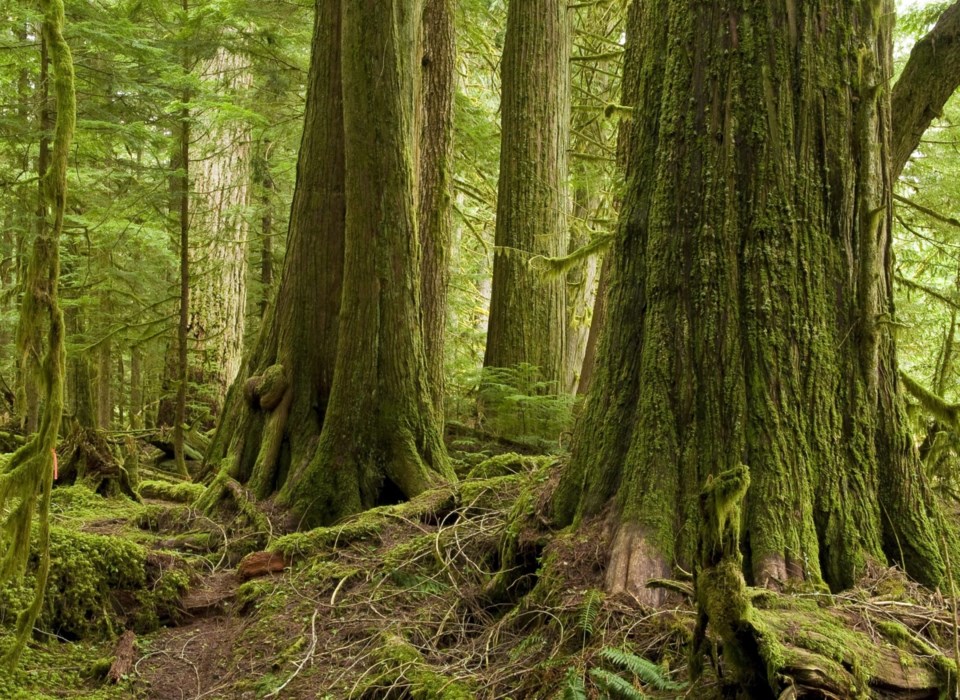BC released its much-anticipated old growth plan this week, which ended up being both a hugely significant reform to the forestry sector and also a package of vague promises for the future all at the same time.
Forestry Minister Katrine Conroy said 2.6 million hectares of old growth forests will be deferred from logging, including all of the rare and ancient forests identified by a new independent technical advisory panel of experts.
“We’re building a new vision for forest care to better share all the benefits of our forests together, for generations and generations to come,” she said.
Government had been under heavy pressure to expand old growth protections, after months of protests at the Fairy Creek site on Southern Vancouver Island where more than 1,157 old growth protesters have been arrested blocking logging operations in the largest act of civil disobedience in the country.
But its new plan has significant problems.
The biggest is that the 2.6 million hectares aren’t actually protected until each of BC’s 204 individual First Nations - some of whom support sustainable logging - examine the deferrals in their territories and give the province the okay.
For this enormous undertaking, the government has set a 30 day deadline. It’s so laughably short that the Union of BC Indian Chiefs labelled it a “political souffle” destined to collapse.
BC’s First Nations Forestry Council said it was insulting to assume the province, which took 18 months to finally come up with the plan, could reasonably expect Indigenous nations, with varying resources and skillsets, to examine and approve the deferrals within a month.
Not every First Nation is going to approve all the deferrals within their territory. Meaning the full 2.6 million hectares of protected forests is likely to shrink to a smaller figure. Environmental groups seized on that and other details to paint the plan as somewhat mediocre.
The deferrals also aren’t permanent.
Government officials called them a temporary move, likely to be in place for two years while the province develops - yes you guessed it - another old growth plan.
That means much of this new announcement is simply creating a pause - albeit one recommended by the technical review panel of experts - to set a new deadline of two years in which everyone will scramble to figure out a third take on what to do about old growth trees.
Then there’s the complete lack of details on the cost and impact to the existing forestry sector.
Conroy said she estimates 4,000 people might lose their jobs due to curtailed logging in the areas, but she wouldn’t say how government arrived at that figure, its estimated damage to the industry, or how the reduction in forestry revenues will impact the provincial treasury.
The lack of figures is particularly absurd because the BC government delayed this announcement for months while it worked on a “socioeconomic analysis” of what the deferrals would mean. It appears to have read that analysis, then stuffed it in a locked drawer never to be seen by the public.
Against this backdrop of caveats and wrinkles to the plan, the BC forestry sector reacted with outrage.
The Council of Forest Industries (COFI) estimated the changes will cost as many as 18,000 jobs, lead to the closure of up to 20 mills and result in a drop of $400 million in annual government forestry revenue.
“If fully implemented, this move will have a profound and devastating impact on people, families and communities across the province,” said COFI CEO Susan Yurkovich.
Forestry companies are being encouraged by Premier John Horgan to invest in new innovative technologies that take less-desirable wood, and wood waste, and turn it into value-added products that are more sustainable than cutting down old trees.
But the sector said the uncertainty to its supply caused by the new old growth deferrals is likely to scare off companies from making major investments.
Even the BC Steelworkers, the largest donor to the BC NDP in the 2017 provincial election campaign that brought the party to power, called the government decision a “devastating gut punch” that will ripple through thousands of jobs and subsectors of the forest industry.
Much of the government’s current problems on the old growth file are of its own making - it should have announced the deferrals more than a year ago, and it’s clearly jamming First Nations to try and alleviate the political pressure it’s facing from rising protests and environmental groups.
Still, it’s also possible to sympathize with the government’s position.
On the one hand, any increase in old growth protections will hurt thousands of jobs in small forest-dependent communities. On the other hand, the province can’t simply allow its small supply of irreplaceable ancient trees to be cut down until they all vanish.
Balancing these two concerns is unlikely to please everyone - or in the case of this latest old growth plan, anyone really.
Rob Shaw has spent more than 13 years covering BC politics, now reporting for CHEK News and writing for The Orca. He is the co-author of the national best-selling book A Matter of Confidence, and a regular guest on CBC Radio.
SWIM ON:
- Virtually everyone agrees with the goal behind the move to decriminalize possession of small amounts of drugs. It’s just not clear whether BC’s actual plan will get us there.
- BC’s forestry management practices have needed updating for years – and while there are some positive steps in the NDP’s new bill, it leaves a lot left to do, especially for forestry-dependent communities, says Dene Moore.
- Back in 2019, Bob Price looked at communities feeling effects of major forestry employers closing doors.



